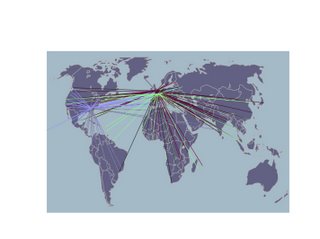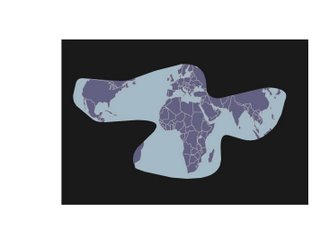Some exceptions to occur,
My map intends to explore the spheres of influence of the major airlines and the countries they represent and it goes further attempting to predict future dominant powers as represented by air superiority. Based on the growth of airlines and the rate of change in population/per capita GNP the map predicts which airlines will rise next to bring their countries to the economic forefront of the globe. The best prospect, no surprise, seems to be
Tuesday, October 17, 2006
Mapimation Update
Modern travel, especially air transportation connects today’s world—air travel connects people and goods with any corner of the world within 24 hours or less. Yet the globe’s 15 largest airlines only represent seven countries. Though less realized, air travel holds similar status today to marine travel a century ago. Until recently, the measure of a nation’s power could be gauged by the size and power of its navy. Today, air dominance holds a similar status. A century ago, wars were won by ships, worlds were connected by ships and all goods crossing oceans were freighted on ships. Today, air superiority wins wars, one can fly to any corner of the world within 24 hours, and 36% of the value of all goods traded around the are world flown to their locations (pretty good considering that this 36% of value constitutes only 5 percent of volume, all other goods are moved via ship, truck, train or other mode of transportation). Air domination today is equivalent to naval domination centuries ago.
Subscribe to:
Post Comments (Atom)










No comments:
Post a Comment